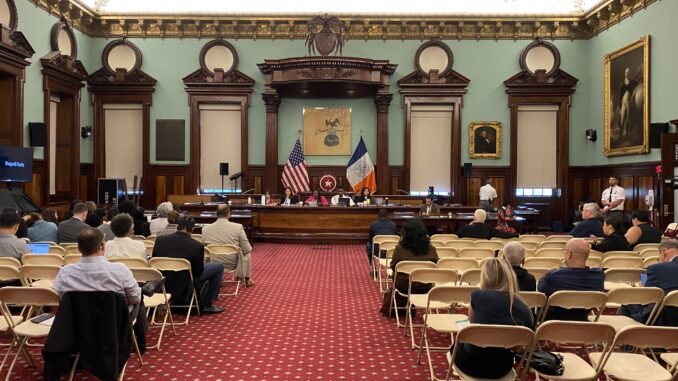
BY BRET BOTFELD
The Committee on Civil and Human Rights, jointly with the Committee on Cultural Affairs, held a hearing on September 19, in regard to several bills being introduced to address racial justice.
The NYC Commission on Human Rights, the Mayor’s Office of Equity (MOE), the NYC Public Design Commission, advocates, community organizations, and members of the public testified on Tuesday as part of an effort to recognize the enslaved people who built this city.
Public Advocate Jumaane Williams testified on behalf of a bill along with lead sponsor, Council Member Charles Barron that would require an informational sign near the intersection of Wall and Pearl Streets in Manhattan to mark the site of New York’s first slave market. “The only way to move towards our future is to confront the past,” Williams said. New York was growing fast during the 1700s and slave labor was used to build the big city.
“The city was built on the backs of these slaves,” Nantasha Williams, Committee on Civil and Human Rights Chair said. According to the site Mapping the African American Past, a Columbia University project, nearly 1,000 out of about 6,400 New Yorkers were black, and at least 40 percent of the white households included a slave. In these homes, enslaved workers cooked, washed, sewed, hauled water, emptied the chamber pots, swept out the fireplaces and the chimney’s, and cared for the children.
Council Member Sandy Nurse testified on behalf of a bill to amend the city charter and the administrative code, to diversify public art and school names. Earlier this year, workers removed a statue of Major General Philip Schuyler from his spot outside City Hall in Albany according to a report by Albany Times Union. Schuyler was the largest owner of enslaved people in the city during his time. “The art we display must include equity,” Nurse said.
The committee took no immediate action on the legislation proposed during the hearing on Tuesday.
